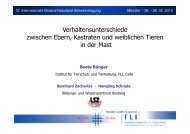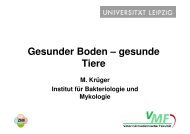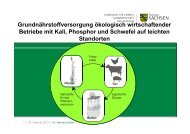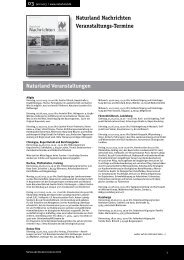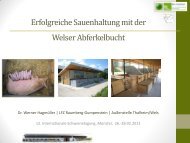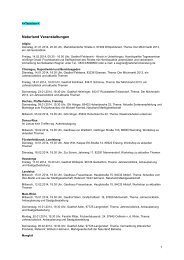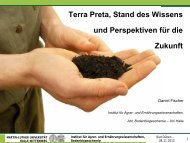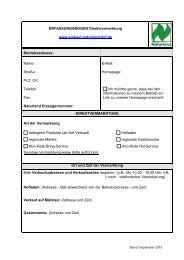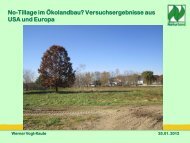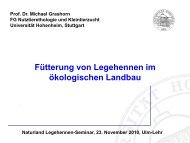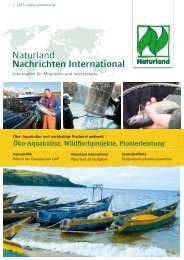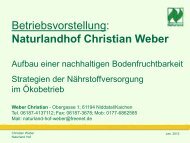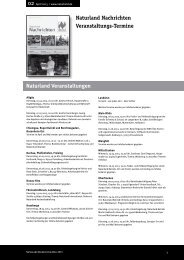Organic Farming in the Tropics and Subtropics: Sesame - Naturland
Organic Farming in the Tropics and Subtropics: Sesame - Naturland
Organic Farming in the Tropics and Subtropics: Sesame - Naturland
Create successful ePaper yourself
Turn your PDF publications into a flip-book with our unique Google optimized e-Paper software.
II Special section: <strong>Organic</strong> Cultivation of <strong>Sesame</strong><br />
The <strong>in</strong>dividual plant parts conta<strong>in</strong> at harvest<strong>in</strong>g time 9 : (given <strong>in</strong> kg/ha)<br />
Plant part TM N P K<br />
Roots 779 2.84 0.95 4.33<br />
Stems 2846 10.24 7.94 42.98<br />
Leaves 2058 34.98 12.30 16.74<br />
Capsules 4429 71.74 10.63 72.42<br />
Total 10429 119.80 31.82 136.47<br />
These values correspond to a very high yield from a conventional plantation of 2200<br />
kg/ha; yet <strong>the</strong>y demonstrate <strong>the</strong> high content of nutrients <strong>in</strong> <strong>the</strong> foliage, that should<br />
<strong>the</strong>n be returned to <strong>the</strong> field as mulch (or well-composted <strong>in</strong> <strong>the</strong> case of disease).<br />
The nutrient requirements are distributed over <strong>the</strong> vegetation periods <strong>in</strong> <strong>the</strong> follow<strong>in</strong>g<br />
way:<br />
Days after sow<strong>in</strong>g 0-29: 3%<br />
30-47 10%<br />
48-81 58%<br />
82-110 29%<br />
2.5.2. <strong>Organic</strong> fertilisers<br />
The most important methods of apply<strong>in</strong>g fertiliser on organic sesame cultivations<br />
are:<br />
• The use of green manure, <strong>in</strong>clusion of legumes <strong>in</strong> crop rotation, <strong>and</strong><br />
• The use of organic manure <strong>and</strong> compost manure.<br />
Direct application of fertiliser to sesame is not always necessary; if <strong>the</strong> soil conta<strong>in</strong>s<br />
plenty of humus, <strong>the</strong>n fertiliser may already be provided by <strong>the</strong> previous crop. If<br />
fertiliser is to be applied directly, <strong>the</strong>n it is sufficient to do this one month before<br />
sow<strong>in</strong>g, as <strong>the</strong> seed bed is be<strong>in</strong>g prepared. When us<strong>in</strong>g ripe compost, around 3 t/ha<br />
(ca.7 m³/ha) suffice when applied to <strong>the</strong> seed furrows, or after s<strong>in</strong>gl<strong>in</strong>g.<br />
The supply of phosphorous can be a limit<strong>in</strong>g factor for high sesame yields.<br />
Phosphorous deficiency can be alleviated with rock phosphate <strong>and</strong> bone meal,<br />
which should <strong>the</strong>n be applied before <strong>the</strong> soil is prepared. The amount <strong>and</strong> type of<br />
phosphate made available to <strong>the</strong> plants can be improved by <strong>the</strong> symbiotic<br />
relationship with mycorhiza, As this has <strong>the</strong> effect of <strong>in</strong>creas<strong>in</strong>g <strong>the</strong> surface area of<br />
<strong>the</strong> root system. By excret<strong>in</strong>g a variety of substances, e.g. phosphatase, it can even<br />
make organically bound P available to <strong>the</strong> plants.<br />
9 WEISS, E.A. (1983): Oilseed Crops. Longman, London.<br />
Naturl<strong>and</strong> e.V. – 1 st edition 2000 Page 8



